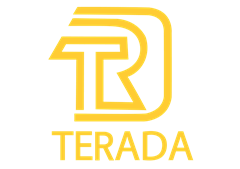The Structure and Installation Precautions of Elevator Wire Rope

Wire rope refers to a flexible rope twisted with multiple or multiple strands of thin steel wires. It is a rope twisted into a spiral by a certain number of strands with the core of the rope as the center. In the work of material handling machinery, it is used for lifting, traction, tensioning, and carrying. The steel wire rope has high strength, is lightweight, has stable work, and is not easy to be broken suddenly. It is safe and reliable. TERADA shares the basic knowledge of wire rope with everyone below.
Classification of wire rope
There are many classification methods for steel wire ropes. The common ones are classified according to steel rope structure, twisting direction, surface, use, etc. The variety of varieties also reflects the diversity of its uses.
1. According to the structure, it is divided into single-twist (strand) steel wire rope, double-twist (multi-strand) steel wire rope, and three-twist steel wire rope (steel cable).
2. Divided by diameter:
(1) Thin-diameter steel wire rope, that is, steel wire rope with a diameter of <8mm.
(2) Ordinary diameter steel wire rope, that is, steel wire rope with a diameter ≥ 8~60mm.
(3) Thick-diameter steel wire rope, that is, steel wire rope with a diameter >60mm.
3. According to the surface condition: smooth steel wire rope, galvanized steel wire rope, plastic coated steel wire rope.
4. According to the cross-sectional shape of the strands: round strand steel wire rope and special-shaped strand steel wire rope.
5. According to the twisting method, there are four types: right alternating twist, left alternating twist, right same direction twist, and left same direction twist.
Advantages and disadvantages of alternating twist and same direction twist
Among the steel wire rope varieties, the right alternating twist is the most. Generally, when the supply and demand sides determine the twist direction, the same direction twist can be selected if flexibility is emphasized, and the alternate twist can be selected when the non-looseness and non-rotatability are emphasized.
As for the choice of left-twisting or right-twisting, it is determined by factors such as equipment conditions and operating habits. The disadvantages of alternating twists are poor contact, ease to wear, short life, and the advantages have no tendency to lose and twist.
Therefore, the advantages of co-twisting are relatively soft, easy to bend, small internal stress, smooth surface, small abrasion, and long service life; the disadvantage is that it is easy to loosen, rotate, the suspension is difficult, and the elongation afterload is large. The advantages and disadvantages of alternately twisted steel wire ropes are opposite to those of the same direction twist.
The principle of cooperation between steel wire rope and drum
Two types of wire ropes, left-handed and right-handed, can be used for left-handed drums and right-handed drums.
The left-twist and right-twist ropes have a certain corresponding relationship with the direction of rotation of the drum. Only by choosing the right twist direction of the steel wire rope can the service life of the steel wire rope be prolonged.
The winding direction of the wire rope on the drum must be in the direction in which the wire rope is twisted tightly instead of loosely. It is recommended to use left-handed steel wire rope for drums with right-handed rope grooves. On the contrary, right-handed steel wire ropes should be used for drums with left-handed rope grooves.
In short, the twist direction of the wire rope must be selected according to the direction of rotation of the drum, and the wire rope cannot be “broken”.
In addition, the winding direction of the steel wire rope on the drum must be based on the twisting direction of the steel wire rope. The right twisted rope is arranged from left to right, and the left twisted rope is arranged from right to left. The winding should be arranged neatly to avoid deviation or pinching.
In addition, when wire ropes with different rope materials and specifications are used in different situations, they need to accurately calculate their load limits to prevent structural damage to the wire rope during use, which may lead to some safety accidents.
As an experienced hardware manufacturer, TERADA always puts product quality and customer needs as the first priority. Relying on our excellent manufacturing technology and dedicated service attitude, we have gained the praise of the people in the industry and the trust of customers. Our products cover a variety of specifications and models to meet the different needs of users. If you are interested in our wire rope, please contact us immediately!


 TERADA HARDWARE
TERADA HARDWARE

